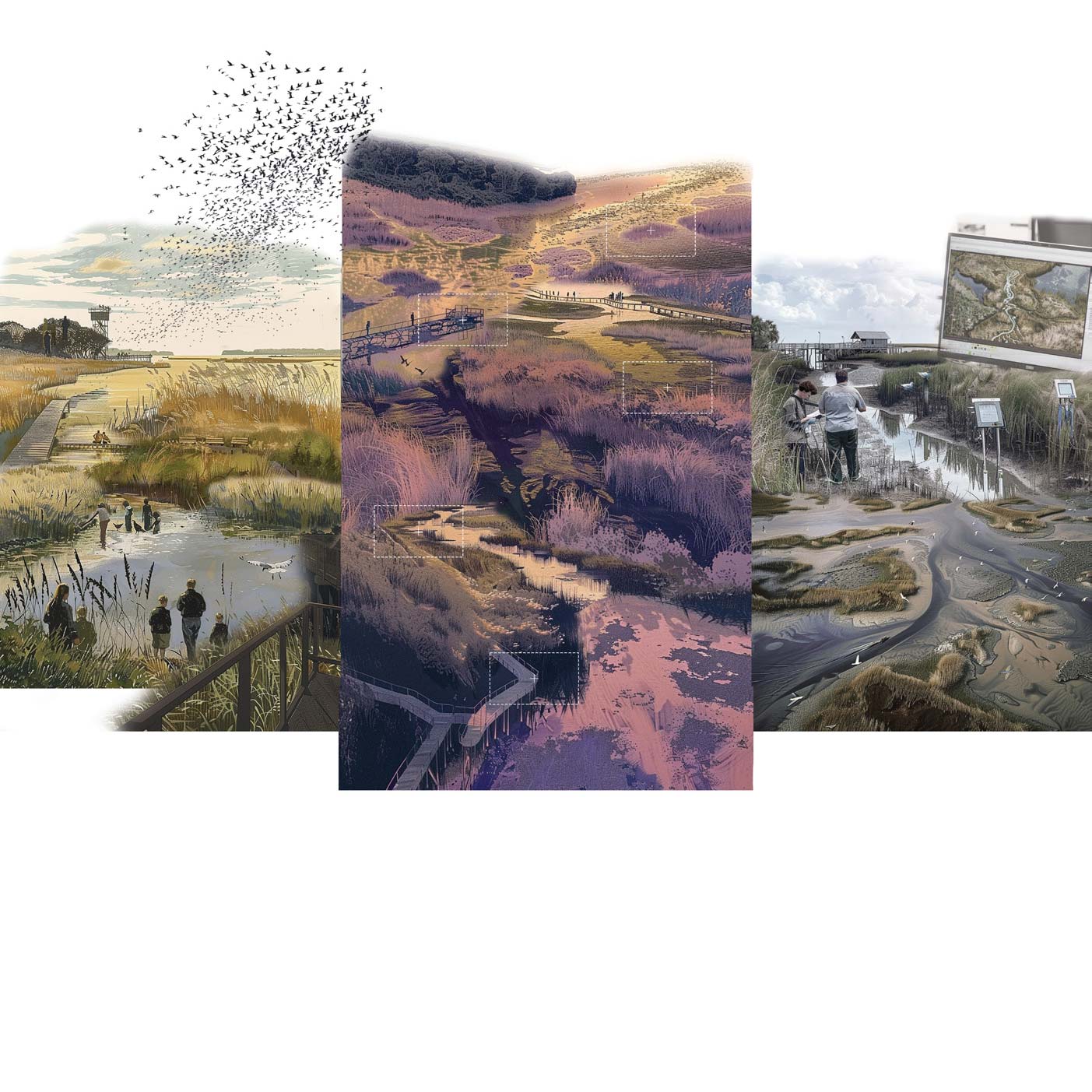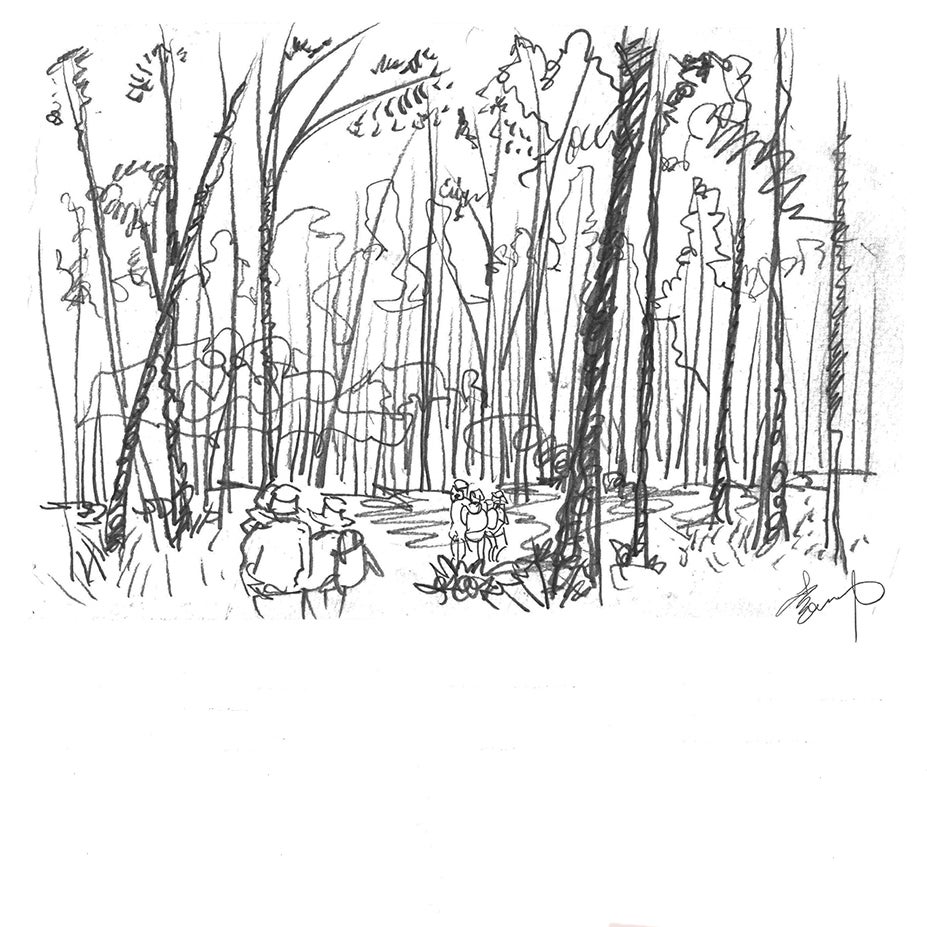
The Jefferson Trust Awards Flash Grants to A-School Faculty Integrating Biophilia and Design-Build into Courses
The Jefferson Trust makes grants to innovative ideas that enrich the University of Virginia and the student experience. Founded in 2006, the Trust has awarded over $16 million to 382 trustee-selected projects across Grounds.
As part of its recent cycle of funding, they awarded $115,558 across 19 flash grants this spring — with new student learning experiences serving as a key theme this year.
“We received 52 proposals in our January round and 64 in February; mostly from students. This volume speaks to the activity, engagement, and innovation of the UVA student body, as well as their drive to define their student experience”, says Brent Percival, Executive Director.
Different than the Trust’s Annual Cycle grants, Flash Funding grants are capped at $10,000 per project and are awarded monthly beginning in January.
Two proposals, led by UVA School of Architecture faculty that incorporate student learning and integration into courses, were selected to receive flash grants.

Biophilic Region Charlottesville and Albemarle County (CAC) Exhibition: $9,810
|
Image

|
Project Director:
Mona El Khafif, Associate Professor of Architecture and Graduate Certificate Program Director, Urban Design
Key Team Members:
Ila Berman, Elwood R. Quesada Professor in Architecture, UVA
JD Brown, Program Director, Biophilic Cities, UVA
Kaleb Notari, BS Environmental Science '25, UVA
Christine Putman, Vice Chair, Natural Heritage Committee Albemarle County
A team from the School of Architecture has helped to establish central Virginia as a recognized Biophilic Region with abundant green spaces, integrated natural elements, support for biodiversity, sustainable urban practices, education, and community engagement. Funding helps publicly launch the project through an exhibition and community event.

In spring 2024, the Natural Heritage Committee Albemarle County (NHC), in collaboration with the UVA School of Architecture, the Next Cities Institute, and the Biophilic Cities Network (BCN) initiated a project called Biophilic Region Charlottesville Albemarle County (CAC). This project seeked to officially establish Charlottesville and the Albemarle County region as part of the Biophilic Cities Network and foster collaboration between the many stakeholders that are actively contributing to strengthening the biophilic qualities of this combined area. Biophilic Cities prioritize the following:
- Abundant Green Spaces: the creation and preservation of green spaces, such as parks, gardens, green roofs, and urban forests that allow residents to connect with nature, reduce stress, and engage in physical activity.
- Integrated Natural Elements: use of natural elements, such as green walls, water features, natural lighting, and the use of natural materials in construction, that are integrated into the built environment and that create healthier urban settings.
- Support for Biodiversity: a commitment to protecting and enhancing biodiversity by creating habitats for wildlife within the city, such as pollinator gardens, bird-friendly buildings, wildlife corridors, and wetland restoration projects.
- Sustainable Urban Practices: the adoption of sustainable practices, including green building standards, renewable energy use, water conservation, and waste reduction that reduce environmental impact and support ecological health.
- Cultural Landscapes and Historical Identity: reflecting the region's historical connection to the land, which in the case of Charlottesville and Albemarle County includes its rural heritage, indigenous history, and sustainable agricultural practices.
- Community Engagement: involving residents in creating and maintaining natural spaces through community gardens, tree planting initiatives, and environmental education programs that foster a sense of stewardship and a connection to nature.
|
Image

|
Image

|
| (L): Mapping Safe Wildlife Passages in the region developed by students in Urban Strategies (PLAN/ARCH 5614), fall 2024. Image © Vasudha Chakravarty, Shiza Chaudhary, and Julia MacNelly. (R): The CAC Biophilic Region's Recreation developed by students in Urban Strategies (PLAN/ARCH 5614), fall 2024. Image © Agnes To, Joyce Fong, Sarah Cheang, and Stanie Zhang. | |
To support the project goals and to integrate community partnerships within coursework, El Khafif's Fall 2024 Urban Strategies (PLAN/ARCH 5614) class focused on the development of a comprehensive asset analysis of the region through the lens of the seven identified biophilic attributes shared above. This analysis, in collaboration with the Natural Heritage Committee Albemarle County, the Tree Commission Charlottesville, the Wildlife Center of Virginia, the Rivanna River Alliance, and Parks and Recreation - City of Charlottesville, highlights the impact of academic work on real world built environment development and conservation.

The Jefferson Trust funds will support the design and installation of an exhibition that presents the students' asset analysis and serves as a catalyst for continued community engagement. As part of the exhibition launch, an event including presentations and discussion panels that brings together faculty, students, and community parters, will celebrate the establishment of the CAC region as part of the Biophilic Cities Network.

Hands-on Design-Build — Constructing at Scale within the Curriculum : $9,000
|
Image

|
Image

|
Project Directors:
Seth McDowell, Associate Professor in Architecture and Graduate Program Director
Kyle Schumann, Assistant Professor in Architecture
Undergraduate Architecture students will construct a timber structure, gaining critical skills in timber building, construction detailing, and material sourcing.
Hands-on Design-Build will create an opportunity for undergraduate architecture students to gain hands-on construction experience through the core curriculum. The project is entirely new as of Spring 2025, conducted within Building Matters (ARCH 3260), a required course within the Bachelor of Science-Architecture program. The course enrollment ranges from 70 to 100 students each spring and the project addresses a gap in student learning — in recent years, there has not been an opportunity for all undergraduate students to gain hands-on construction experience through a design-build experience. This project will allow student teams to construct a seventy foot-long timber structure within the School of Architecture, gaining critical skills in timber building, construction detailing, material sourcing, and teamwork in architectural project delivery methods. In addition to the hands-on experience and course lectures by instructors and project directors McDowell and Schumann, design and construction experts from across the UVA community will be invited to lecture for the class and build knowledge that will be applicable to the students’ design-build work. The initiative works in close collaboration with the School of Architecture's FabLab and other UVA Maker Grounds facilities.
|
Image

|
Image

|
| Details in timber construction designed and built by Before Building Laboratory, co-led by Assistant Professor Kyle Schumann. At left, Sylvan Scrapple, a temporary installation built by a team of paid student researchers for Exhibit Columbus. At right, Crinkle Cuts, a pavilion constructed from timber elements milled with robotic sawmill technology. Photos © Before Building Laboratory. | |
Piloting this project, this semester students are working in eleven teams of seven students to collectively design and build an exhibition infrastructure within Campbell Hall’s main lobby. Student groups work together to design and detail their own design, and collaborate closely with their peer groups to ensure that each group’s design can be successfully assembled with adjacent groups into a singular and cohesive structure built collectively by the entire class. The construction will define a space for gathering and serve as a structure to display student work from across the School of Architecture during the end-of-semester Final Reviews. A critical requirement of the project is that it is designed for disassembly, meaning that all connections will be made with screws or bolts. This important sustainable design factor allows for the rapid assembly and disassembly of the structure, while the disassembled materials will be reused by students within other courses.
While the full-scale nature of design-build projects is both incredibly valuable for student experience and learning, but can also be prohibitively expensive. The Jefferson Trust Funds for this initiative will primarily support the cost of physical materials for student use including lumber, plywood, and hardware. Hands-on Design-Build — Constructing at Scale within the Curriculum is structured for a three-year period, providing opportunities for iteration and refinement of the pedagogy, and allowing time to seek and secure longer-term support for design-build work within the curriculum.
For more information on the Jefferson Trust, visit www.jeffersontrust.org.


